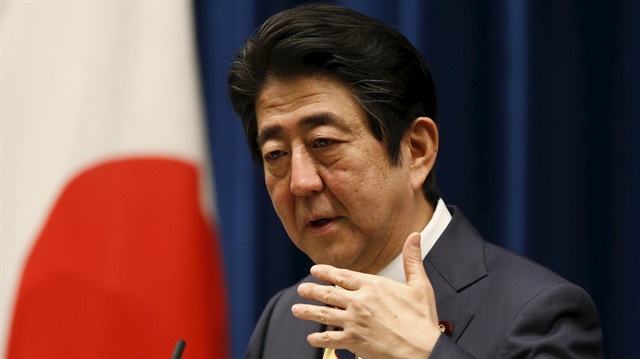
Japan's leaders could do little more than sputter complaints and denunciations over the news that North Korea had detonated what it called an “H-Bomb of justice” this week.
North Korea's latest atom bomb test, which Pyongyang claimed was that of a hydrogen bomb, was “ totally unacceptable, a grave threat to our security, and we cannot allow it,” said Prime Minister Shinzo Abe.
“Japan will take decisive action,” he said.
But there is almost nothing that he or any other Japanese can do about it alone. Tokyo cannot increase sanctions, as Japan now has no commercial intercourse with North Korea whatsoever.
North Korea is the only country in which Japan has no diplomatic relations.
Promising bilateral initiatives such as one designed to put to rest the issue of Japanese nationals abducted by North Korean agents between 1977 and 1983 have been stalled for months.
Indeed, it would be difficult for Japan to respond to change in attitude now, as it would make it look like Abe was breaking ranks with international condemnation.
One thing Japan has going for it is its recent election as a member -- without a veto -- of the United Nation's Security Council, which gives it a platform in which to help coordinate and initiate any international responses to the latest provocation from Pyongyang.
North Korea has thumbed its nose at international opinion for at least 20 years as it steadily worked toward becoming a nuclear weapons state. That officially happened when in 2006 the North conducted its first underground explosion.
It exploded two other underground tests in 2009 and 2013, leading to last Wednesday's underground blast.
Many experts believe that the first two tests were actually flops and that Pyongyang didn't really join the exclusive club until the 2013 tests.
Many have questioned whether the latest blast was -- as North Korea leader Kim Jong-un claimed in his New Year' speech -- really a hydrogen bomb experiment.
White House spokesperson Josh Ernest said that “initial analysis indicates the test was 'not consistent with a hydrogen bomb'.”
The explosion was picked up at numerous international seismic monitoring stations that gave it a rating of 5.1 on the Richter Scale.
This, they claimed, was consistent with a 10 kiloton weapon (about half the size of the Hiroshima bomb).
The yields of thermonuclear bombs -- the proper nomenclature for a 'hydrogen bomb' -- are measured in megatons, not kilotons.
More clues to the test may come from radiation 'sniffing' planes, dispatched by the U.S. air force, which fly close to the North Koran coast and pick up any radiation particles leaking into the atmosphere from the test site.
But that assumes that there are leaks. The sniffer aircraft failed to detect any radionuclides from the third 2013 test, so technicians were unable to deduce exactly what kind of a device it actually was.
Some have speculated that the test might have been connected with components of the hydrogen bomb, such as the atomic bomb 'trigger' that fuses the other elements producing the powerful explosion.
The purported hydrogen bomb test completely over-shadowed another worrisome, but apparently successful third test of a submarine-launched ballistic missile in December.
Of course, any successful development of a submarine-launched missile would take East Asian security concerns to a new and higher level.
North Korea has a large fleet of submarines, but most of them are too small or too obsolete to use as underwater launching pads for nuclear tipped ballistic missiles. That may be changing.
The main North Korean shipyard at Sinpo is reportedly being renovated to provide for the construction of larger submarines than those currently serving in the navy.
These new threats come at a time when Japan is experiencing new Chinese “provocations” in its nearby seas.
On Dec. 26, four Chinese Coast Guard cutters -- for the first time, one clearly armed with gun turrets -- entered Japanese claimed territorial waters around the disputed Senkaku islands.
Further away in the South China Sea, China has begun rotating aircraft between the mainland and the Fiery Cross reef in the disputed Spratly islands, one of three with runways long enough to accommodate advanced aircraft.
So far, they have all been civilian aircraft, but it seems only a matter of time before military planes replace the civilian aircraft on China's reclaimed reefs and atolls.
In the popular mind, North Korea is a desperately poor and technologically challenged country.
But so too was China when it exploded its first atomic bomb in 1964, later developing thermonuclear war heads for its ballistic missiles.
North Korea has been working on producing nuclear weapons for some 20 years, and it would be surprising if they didn't make progress, analysts say.
Jeffrey Lewis, director of the East Asia Nonproliferation Program at the James Martin Center for Nonproliferation Studies, wrote on the influential North Korea-watcher blog site, 38 North: “We should not expect them to be testing the same fission devises over and over again.”















